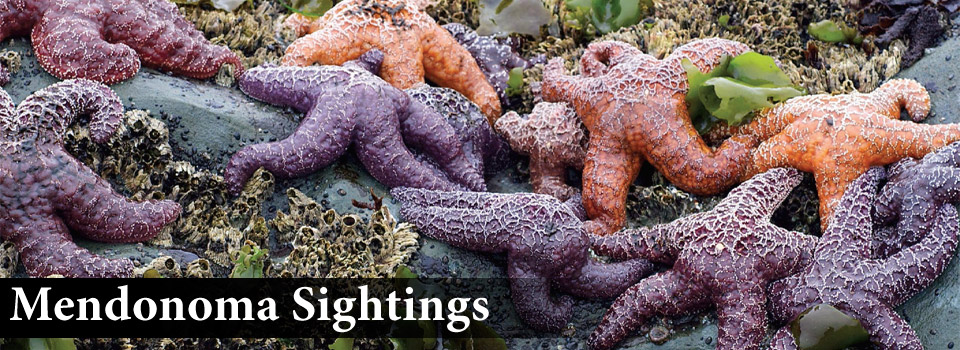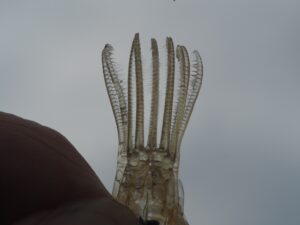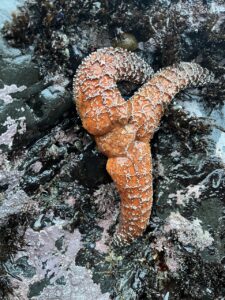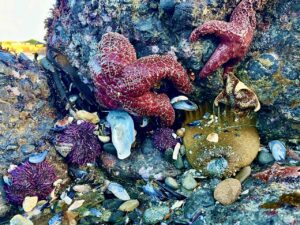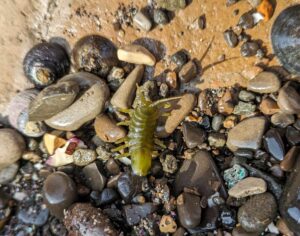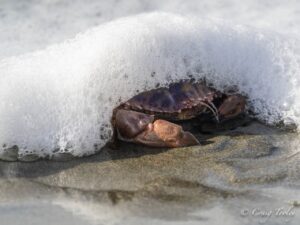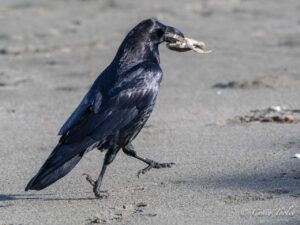Amy Ruegg had a rare sighting and a touching experience recently. She wrote, “Sydney [the dog] and I visited Pebble Beach an hour or two before sunset. The tide was fairly low and several sea creatures were visible. We shared the beach with only one other, a young woman by herself. She had stopped and was looking very closely at something as I approached. She excitedly pointed at the water’s edge—a squid! There it was about six inches long, swimming along looking up at us with a surprising intelligence. We couldn’t believe it!"
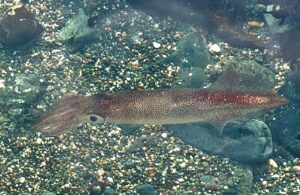
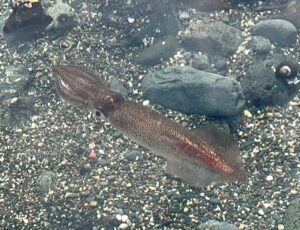
“We chatted as we took pictures with our phones and enjoyed watching the lovely creature zip up and down with the wave action. She introduced herself, Pam, and shared she was on a solo journey to nourish herself after her husband filed for divorce. She said she almost drove past the beach access but something told her to turn around. She was entranced by the beauty and abundance of life on Pebble Beach. The squid kept looking up at us. I felt the special little squid was trying to tell her that magic happens! She was on the right path. It’s not just the sightings that bring us joy, but the deeply meaningful moments when Nature speaks to us like a guardian angel.”
I do believe there is great healing in Nature. From walks in the forest, which is sometimes referred to as forest bathing, to an encounter with a special squid, there is comfort to be had.
After searching my database for a previous squid sighting, I came up empty. This is the first squid sighting in the 17 years of writing my Mendonoma Sightings column in the Independent Coast Observer! I sent Amy’s photo to Bob Van Syoc. He wrote, “ Wow, that’s a very special sighting. It’s Doryteuthis opalescens, sometimes called the market squid here. I think the name “opalescens” is more descriptive of them in life as they can neurologically activate chromatophores (color and light producing areas) on their skin to produce pulsating waves of color and light up and down their bodies! One of the most captivating things I’ve seen was pairs of mating squid making those lovely color and light patterns. The females lay finger-sized capsules of eggs masses in bunches after mating. Like all cephalopods, they die soon after mating and reproducing a single time. Doryteuthis opalescens does tend to reside further south, they are common around Monterey Bay. But it’s not unheard of for them to show up on our coast. Thanks for sharing the photos and the special experience Amy had with her new friend.”
This squid’s other common name is Opalescent Inshore Squid, which I’ve chosen to use rather than Market Squid.
Thanks to Amy for allowing me to share her photos with you here. What a great sighting!
Today is sunny, warm and calm, ie, no wind! This is forecast to be the warmest day of the next seven days. The Pacific Ocean looks to be flat calm, which can be deceptive, I know.
